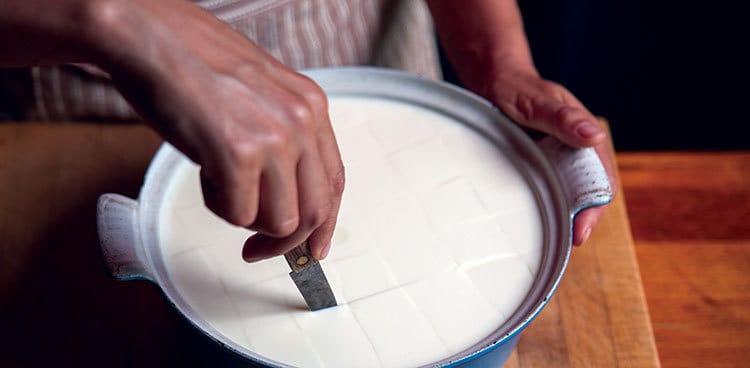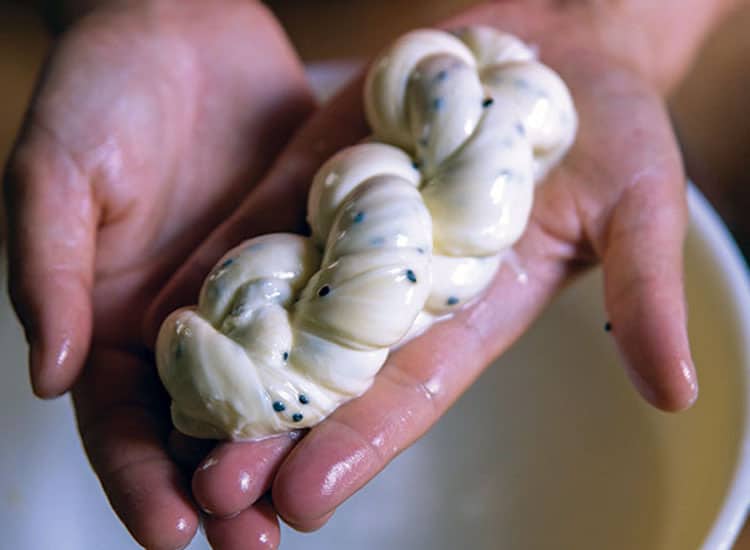
Studded with black nigella seeds, Armenian string cheese is beautiful to look at and fun to eat. This pasta filata style (which translates to “spun paste” and has a cooked, stretched curd) is like a drier, saltier mozzarella—think of it as an elegant version of string cheese. If you can source fresh, non-homogenized milk, you can make this snack in your own kitchen. (Proteins in homogenized milk create a curd too brittle to be stretched, a hallmark step for this type of cheese—learn more here.) It isn’t the easiest of recipes, but it’s a fun challenge if you’re ready to move beyond the basics.
Armenian String Cheese
Makes: 12-16 ounces
EQUIPMENT:
- 2 2-gallon pots
- Thermometer
- Long-handled spoon
- Knife with a long blade
- Colander
INGREDIENTS:
- 2 gallons unhomogenized whole milk, divided
- 1∕8 teaspoon thermophilic freeze-dried culture (or 3 tablespoons plain yogurt)
- 1¼ teaspoons citric acid crystals, diluted in 2 tablespoons water
- ½ teaspoon single-strength rennet
- Kosher salt, to taste
- ¼ cup nigella seeds
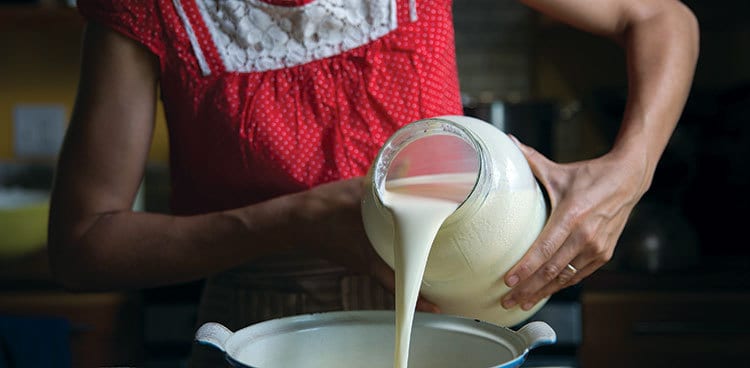
Heat 1-gallon milk in a 2-gallon pot over medium-low heat, stirring occasionally until it reaches 95°F. Remove from heat and sprinkle in culture (or stir in yogurt). Cover pot and allow milk to ripen for 25 minutes. (Maintain temperature by keeping pot away from cold drafts and covering with a towel.)
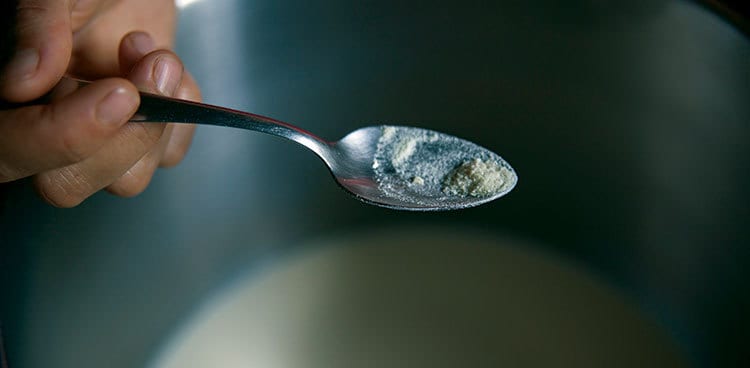
Meanwhile, chill the second gallon of milk if necessary (it should be 65°F or lower). Once the warm milk has ripened, pour chilled milk into a separate 2-gallon pot. Stir in citric acid solution. Pour chilled milk mixture into the pot of warm milk. Bring the temperature of combined milks to 92°F over low heat.
Remove milk from heat and add rennet. Stir quickly and thoroughly to incorporate, then stir in opposite direction to stop motion of milk. Cover pot and set aside until milk firms into a curd with the consistency of Jell-O, 20 to 25 minutes.
Cut curd into 1-inch cubes with a long knife. Once the curd has been cut, stir cubes—gently at first, then increasing speed as you go. Slowly warm stirred curds to 115°F over low heat (this should take about 30 minutes). When curds reach 115°F, remove from heat. Allow curds to settle in bottom of pot
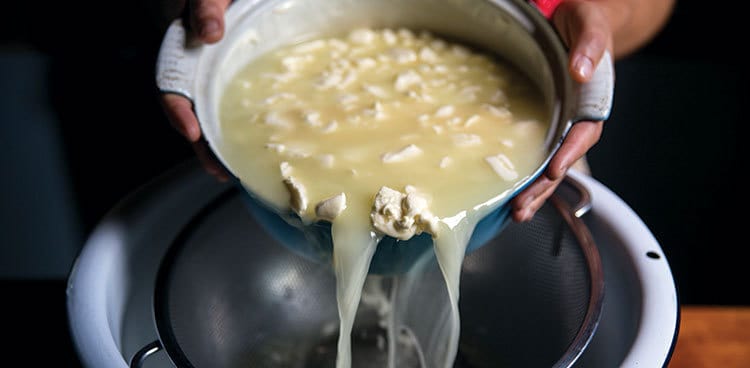 Place a colander over the previously used pot, then pour curds into the colander. Prop up colander if needed to keep cheese freely draining and not sitting in whey. Cover pot to keep curds warm (near 90°F) until they start to become stretchy when a small strip is placed in very hot (but not boiling) water, 1 to 5 hours. (This method is called the “stretch test.”)
Place a colander over the previously used pot, then pour curds into the colander. Prop up colander if needed to keep cheese freely draining and not sitting in whey. Cover pot to keep curds warm (near 90°F) until they start to become stretchy when a small strip is placed in very hot (but not boiling) water, 1 to 5 hours. (This method is called the “stretch test.”)
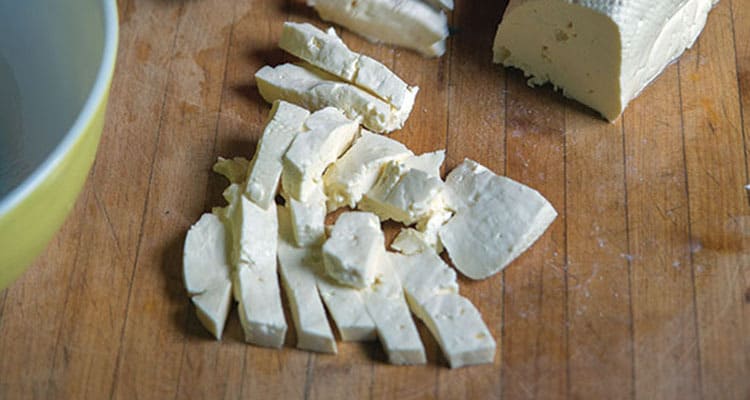 When curds have passed the stretch test, remove them from the colander and cut into roughly ½-inch-by-3-inch strips.
When curds have passed the stretch test, remove them from the colander and cut into roughly ½-inch-by-3-inch strips.
Meanwhile, warm reserved whey over medium-low heat to 170°F. Add salt to taste (about 2/3 cup per gallon of whey). Place a handful of curd strips in a medium bowl. Pour hot whey over strips until they are submerged. Wait until strips begin to melt, 1 to 2 minutes. As strips melt, gather them into a ball.
Knead ball several times as you would bread dough. As you are kneading, sprinkle in a small spoonful of nigella seeds and continue kneading to distribute seeds. If curds become less pliable, return to bowl of hot whey for 1 minute.
Fill a large bowl with 1 quart cold water and set aside. When seeds are evenly distributed and cheese is smooth and shiny, pull cheese into a rope about 2 feet long.
 Twist rope or form into a braid, then plunge into cold water to set for 10 minutes. Remove and enjoy immediately, or wrap tightly in plastic wrap and refrigerate in an airtight container for up to 2 weeks.
Twist rope or form into a braid, then plunge into cold water to set for 10 minutes. Remove and enjoy immediately, or wrap tightly in plastic wrap and refrigerate in an airtight container for up to 2 weeks.



